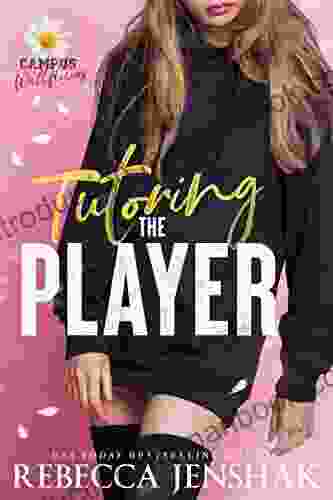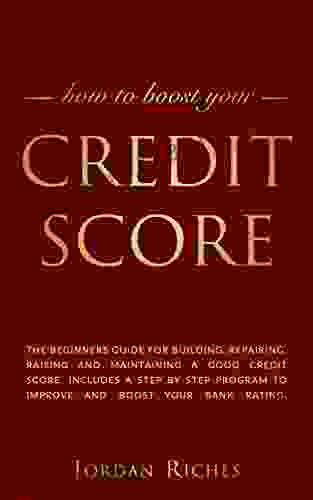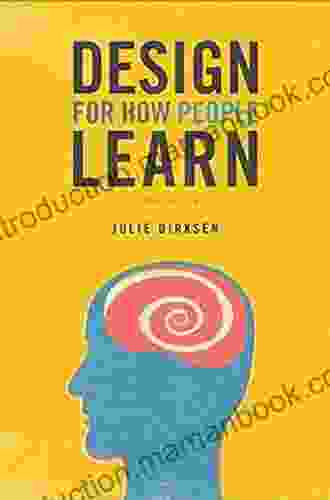Design for How People Learn: Voices That Matter


4.6 out of 5
| Language | : | English |
| File size | : | 16440 KB |
| Text-to-Speech | : | Enabled |
| Screen Reader | : | Supported |
| Enhanced typesetting | : | Enabled |
| Word Wise | : | Enabled |
| Print length | : | 459 pages |
In an era where technology is rapidly transforming the way we learn, it is imperative to design educational experiences that are effective, engaging, and accessible to all learners. This requires a deep understanding of how people learn and the factors that influence the learning process. By incorporating the principles of learning science into educational design, we can create learning environments that empower learners to achieve their full potential.
Voices of Experts
To gain a comprehensive perspective on the topic, we sought insights from leading experts in the field of learning science. Here are some of their voices:
Dr. Barbara Oakley, Professor of Engineering at Oakland University: "When designing for learning, it's essential to consider the cognitive constraints of the learner. Breaking down complex information into smaller, manageable chunks makes it easier for learners to process and retain it."
Dr. David Sousa, Professor of Education at the University of California, Berkeley: "Emotions play a vital role in learning. By creating emotionally engaging experiences, we can motivate learners and make learning more meaningful."
Principles of Learning Science
Based on the insights gathered from experts and extensive research, here are some key principles of learning science that should guide educational design:
1. Active Learning:
Learners retain information better when they are actively involved in the learning process. This can be achieved through hands-on activities, simulations, discussions, and problem-solving tasks.
2. Spaced Repetition:
Reviewing information at increasing intervals helps learners strengthen their memory and improve their ability to recall information over time.
3. Feedback:
Regular and timely feedback is essential for learners to track their progress, identify areas for improvement, and adjust their learning strategies.
4. Chunking:
Breaking down complex information into smaller, manageable chunks makes it easier for learners to understand and remember.
5. Multimedia Learning:
Combining different modalities such as text, images, audio, and video can enhance learning by engaging multiple senses and providing a richer learning experience.
Practical Applications
To make these principles actionable in educational design, here are some practical applications:
- Use interactive simulations and games to make learning more engaging and hands-on.
- Incorporate spaced repetition into learning materials through flashcards, spaced retrieval practice apps, or online quizzes.
- Provide regular and specific feedback to learners through formative assessments, peer reviews, or instructor feedback.
- Structure content into manageable modules or chunks to facilitate better understanding and retention.
- Utilize a variety of multimedia elements such as videos, animations, and infographics to enhance the learning experience.
Equity and Inclusion
When designing for how people learn, it is equally important to consider the principles of equity and inclusion. This means creating learning environments that are accessible and supportive for learners from diverse backgrounds and with varying learning needs. Some key considerations include:
- Universal Design for Learning: Designing learning materials and environments to be accessible to all learners, regardless of their abilities or disabilities.
- Culturally Responsive Teaching: Incorporating the cultural backgrounds and experiences of learners into the curriculum and teaching practices.
- Social and Emotional Learning: Fostering a positive and supportive learning environment that addresses the social and emotional needs of learners.
By embracing the principles of learning science, we can design learning experiences that are effective, engaging, and equitable. By listening to the voices of experts and incorporating their insights into our educational practices, we can empower learners to achieve their full potential and make a meaningful impact on the world.
4.6 out of 5
| Language | : | English |
| File size | : | 16440 KB |
| Text-to-Speech | : | Enabled |
| Screen Reader | : | Supported |
| Enhanced typesetting | : | Enabled |
| Word Wise | : | Enabled |
| Print length | : | 459 pages |
Do you want to contribute by writing guest posts on this blog?
Please contact us and send us a resume of previous articles that you have written.
 Top Book
Top Book Novel
Novel Fiction
Fiction Nonfiction
Nonfiction Literature
Literature Paperback
Paperback Hardcover
Hardcover E-book
E-book Audiobook
Audiobook Bestseller
Bestseller Classic
Classic Mystery
Mystery Thriller
Thriller Romance
Romance Fantasy
Fantasy Science Fiction
Science Fiction Biography
Biography Memoir
Memoir Autobiography
Autobiography Poetry
Poetry Drama
Drama Historical Fiction
Historical Fiction Self-help
Self-help Young Adult
Young Adult Childrens Books
Childrens Books Graphic Novel
Graphic Novel Anthology
Anthology Series
Series Encyclopedia
Encyclopedia Reference
Reference Guidebook
Guidebook Textbook
Textbook Workbook
Workbook Journal
Journal Diary
Diary Manuscript
Manuscript Folio
Folio Pulp Fiction
Pulp Fiction Short Stories
Short Stories Fairy Tales
Fairy Tales Fables
Fables Mythology
Mythology Philosophy
Philosophy Religion
Religion Spirituality
Spirituality Essays
Essays Critique
Critique Commentary
Commentary Glossary
Glossary Bibliography
Bibliography Index
Index Table of Contents
Table of Contents Preface
Preface Introduction
Introduction Foreword
Foreword Afterword
Afterword Appendices
Appendices Annotations
Annotations Footnotes
Footnotes Epilogue
Epilogue Prologue
Prologue Laura Wattenberg
Laura Wattenberg Candy O Donnell
Candy O Donnell Kass Thomas
Kass Thomas Michaeleen Doucleff
Michaeleen Doucleff Steve Blockhead
Steve Blockhead David Allen
David Allen Dan Olmsted
Dan Olmsted F L Trudeau
F L Trudeau A K Aaron
A K Aaron Hugh Howey
Hugh Howey David F Walker
David F Walker Patrick Felicia
Patrick Felicia Malcolm Surridge
Malcolm Surridge Wayne Hall
Wayne Hall Etta Foster
Etta Foster Ted Wachtel
Ted Wachtel Sarah Morgan
Sarah Morgan Caroline Peckham
Caroline Peckham John J Murphy
John J Murphy A L Long
A L Long
Light bulbAdvertise smarter! Our strategic ad space ensures maximum exposure. Reserve your spot today!

 Melvin BlairCaptivating Cinematic Suspense: Delving into the Enigmatic World of "Street...
Melvin BlairCaptivating Cinematic Suspense: Delving into the Enigmatic World of "Street...
 Zachary CoxAn Exploration of "Of English Verse": A Comprehensive Guide to the Macmillan...
Zachary CoxAn Exploration of "Of English Verse": A Comprehensive Guide to the Macmillan... Bill GrantFollow ·2.8k
Bill GrantFollow ·2.8k Nathaniel PowellFollow ·5.4k
Nathaniel PowellFollow ·5.4k Joe SimmonsFollow ·9.4k
Joe SimmonsFollow ·9.4k Jeffrey CoxFollow ·12.2k
Jeffrey CoxFollow ·12.2k Timothy WardFollow ·2.1k
Timothy WardFollow ·2.1k Spencer PowellFollow ·3.8k
Spencer PowellFollow ·3.8k Evan SimmonsFollow ·4.5k
Evan SimmonsFollow ·4.5k Maurice ParkerFollow ·12.5k
Maurice ParkerFollow ·12.5k

 Floyd Powell
Floyd PowellTutoring the Player Campus Wallflowers: A Comprehensive...
College campuses are...

 Chuck Mitchell
Chuck MitchellThe Beginner's Guide to Building, Repairing, Raising, and...
Credit is a...

 Deacon Bell
Deacon BellDelve into the Dangerous World of Motorrad Clubs with the...
Prepare yourself...

 Adrien Blair
Adrien BlairDiscover the Enchanting Allure of Living in the...
The Appalachian Forest, a verdant tapestry of...
4.6 out of 5
| Language | : | English |
| File size | : | 16440 KB |
| Text-to-Speech | : | Enabled |
| Screen Reader | : | Supported |
| Enhanced typesetting | : | Enabled |
| Word Wise | : | Enabled |
| Print length | : | 459 pages |











